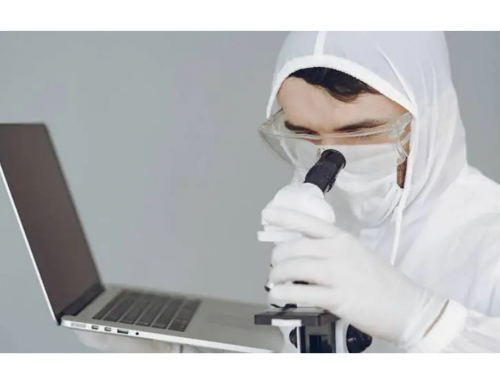
By infusing industry-based skills into education, we ensure students gain the practical know-how to match theories, and graduate with a holistic view of the specialisations.
THE Malaysian Education Blueprint 2015-2025 (Higher Education) has highlighted the need to take collaboration between universities and the industry to the next level by enabling the latter to lead curriculum design and delivery through partnership models which include apprenticeships, hands-on training, real-life simulations and specialised employer training programmes.
Most academicians and industry frontliners are on the same page when it comes to collaboration. The benefits are numerous via the enhancement of research and innovation through joint research projects, delivery of innovative commercial products, improvements in teaching, learning and enrichment of students’ knowledge and their employability, as well as providing new streams of funding to tertiary institutions.
Most universities here have formalised collaboration with the industry in the areas of curriculum development, teaching and learning, research and development, consultancy as well as securing suitable industrial placements for students as part and parcel of a tertiary institution’s core responsibilities.
Dr Ahmad Shuhaimi Abu Bakar, a senior lecturer at Universiti Malaya’s Faculty of Science’s Department of Physics, said engaging with industry players benefits students in terms of acquiring skills and knowledge. Researchers will also gain from technology transfer and commercialisation.
For students, a mismatch of skills required by the industry has always been the root of unemployment, hence the importance of academia-industry linkages for academic engagement via curriculum, lectures and internships.
“Researchers get to collaborate with industry players to take their research products to another level — commercialisation.
“It has always been a practice for researchers to do their research and publish in journals for recognition, locally and internationally.
“This mindset has to change. They should think of making their product visible in the market and reach the end user via commercialisation.
“It is a pity if researchers have good products, which can make a breakthrough in the market, but end up on display in their rooms only,” said Ahmad Shuhaimi, adding that the university needs the industry to play a role in realising the potential of a product.
Ahmad Shuhaimi said the Low Dimensional Materials Research Centre at UM has been engaging with OSRAM Opto Semiconductors to jointly work on a collaborative project in the field of light-emitting diode (LED) technology.
“UM has expertise in this field and we want to produce more graduates who can leverage on this industry.
“The long-funding grant from OSRAM supports our postgraduate students to work on the project. Researchers in the semiconductor industry require a lot of funding to maintain the cost of facilities and laboratories.”
Postgraduate students at the Department of Physics trained in experimental physics analyse crystal growth, chip fabrication and packaging, as well as gas exchange to enable the production of high brightness LED.
Symbiotic partnerships
“All these theories are not taught at the workplace. We have a mini-lab, simulating machineries in the factory, so by end of their studies, we are able to produce skilled manpower for the industry.”
OSRAM Opto Semiconductors research and innovation director Dr David Lacey said the company seeks to identify the leading universities in areas of science and technology relevant to its business, both for teaching (quality of graduates) and research (quality of research and development).

Ahmad Shuhaimi Abu Bakar (right) and his students working on LED technology at a laboratory in UM.

MSU held the eighth edition of its Idea Regeneration Expo recently as part of a university-industry partnership to encourage innovation among students.
Lacey said the Low Dimensional Materials Research Centre is one of the country’s leading specialists in the growth of synthetic crystals for semiconductor applications. “That’s a technology that is at the heart of modern LED that you see in cars, smartphones and street lamps.
“Expanding postgraduate scientists’ knowledge of semiconductor technology and who can join our R&D team and potentially access support for experimental work at UM labs is critical to our business success here.
“In the near future, many semiconductor companies will be expanding their R&D in this region as there will be increasing demand for deep scientific knowledge of materials, chemistry and physics to support this R&D,” he said, adding that OSRAM is also working with Universiti Sains Malaysia, Universiti Kebangsaan Malaysia, Universiti Malaysia Perlis and Universiti Tunku Abdul Rahman (UTAR).
PIPELINE FOR THE INDUSTRY
Youth development has always been one of CIMB’s agenda, both internally and through its various development programmes with universities which set the stage for developing young talents across Asean.
Since 2010, CIMB had organised competitions such as CIMB Asean Stock Challenge, CIMB Trail and CIMB Data Science Challenge annually to reach out to youth and universities in a bid to increase graduate employability by equipping students with current and future-ready skills.
With the advent of the 4th Industrial Revolution (4IR), it has become more compelling than ever to prepare the workforce with new skills and competencies to ensure workers remain relevant and able to thrive in the digital era.
It is even more crucial in today’s operating landscape where disruptions have become the norm.
CIMB Group chief people officer Datuk Hamidah Naziadin said: “We understand that collaboration between universities and industries is critical to accelerate students’ skills development, enhance their industry exposure as well promote participation and engagement via learning.
“Universities are the main talent pipeline for the industry, thus it is crucial for corporations to partner with academic institutions.
“This way, corporations can help shape the curriculum to enable graduates to fully understand the talents that they are looking for.”
The financial institution aspires to develop a robust pool of regional talent to support not only its future growth but also Asean’s.
Hamidah added: “With 4IR already upon us, we want to do our bit to contribute to Asean’s digital readiness by ensuring that its young population is equipped with the necessary skills to leverage on big data, digital innovations and disruptive technology.
“We strongly believe that through industry collaboration together with various initiatives including CIMB’s 3D Academy and human resource development tools, we will be in good stead to usher in the future and ensure that Asean’s future digital talents are ready to take the region forward.”
INTI International University & Colleges chief operating officer Tan Lin Nah said the institutions work closely with the industry to ensure students gain the knowledge and competencies required at the 21st century workplace.
With youth unemployment rates in the country at 10.8 per cent in 2017, which was three times higher than overall unemployment in Malaysia and among one of the highest in the region, she said there is an urgent need to ensure that graduates meet the needs of an increasingly global workplace.
“Collaborating with industries enables us to systematically include additional development and training for students.
“Last year, we signed collaborations with Direct English, Hilton, SAS Institute and a number of partners to offer training in areas such as data analytics, language proficiencies and five-star hospitality which complement the theoretical knowledge of students from various programmes.
“By infusing industry-based skills into education, we ensure students gain the practical know-how to match theories, and graduate with a holistic view of the specialisations and stand out among their peers when entering the workplace.”
Rapid technological advancements including automation, digitisation and the Internet of Things that form part of 4IR add to the complexities of employment.
“With 43 per cent of Malaysian employees believing their jobs are at risk due to digitisation, the university has tied up with global technology giants such as IBM, Google, Microsoft and Alibaba GET to ensure graduates have the skills to deal with digital transformation and remain relevant in spite of growing technological advancements.
“By integrating industry into students’ learning experiences from as early as the first year, we empower them with the competencies they need to thrive when they pursue their careers.”
Vinda SEA, one of the largest companies for hygiene products in Asia, has worked with students on multiple projects, including the development of its corporate video by mass communications students.
“Employer projects enable students to deep dive into business needs, meet senior leaders and develop practical solutions to business issues.
“By working on these projects, students develop critical skills including teamwork, creativity, communication and critical thinking.”
TWO-WAY RELATIONSHIP
Xiamen University Malaysia Assistant Professor Dr Wang Changsong said it encourages the formation of industry-academia partnership to foster close relationship with the industry and community.
Through this exercise, students gain more insight from top industry players in the market which strengthens their skills and knowledge before they enter the workplace.
Most universities require students to complete internship in the final year, undoubtedly a way for them to test the waters of the work environment.
However, he added, it should be a continuous process via academia-industry linkage throughout their three-year first degree studies to ensure students acquire the kinds and levels of skills they need to be employable.
“Students will be able to identify their professional qualities and skills that permit them to position themselves in the market.
“Collaboration with the industry will allow undergraduates to be exposed to real case studies and latest industry insight, attend lectures and get training assistance for educational purposes, as well as internship opportunities,” added Wang, who is also programme coordinator of the advertising programme.
Xiamen University recently formed a collaboration with Leo Burnett Malaysia, the award-winning creative agency under Publicis One Malaysia, to provide a greater learning opportunity with real insight and promote industry readiness among its students in the fields of advertising.
Wang said it is necessary to understand the marketing and advertising industry which is constantly changing with technological advancement.
“Hence, the effective approach to the advertising programme is to be aligned with industrial development.
“These partnerships are a mechanism to remain efficient and provide up-to-date teaching and learning experience.
“I organised the Yasmin Film Fest and Forum last year at the university and met a number of professionals who provided their industrial experience and thoughts on education.
“Education, research and real work are systematically connected all the time to produce quality students, qualified graduates and competence of advertising education in Malaysia.”
As industry partner, Leo Burnett Malaysia chief executive officer Tan Kien Eng said the collaboration aims to foster and promote a collaborative learning culture between professional practice and academics that is mutually beneficial to both parties.
“As we share our expertise by roping in students into our projects, we will also adapt to industry change and further evaluate students’ needs to meet the objectives,” he added.
As an established company, the creative agency believes in inculcating young talent with the true meaning and the purpose of marketing and communication by adopting a human approach.
“We believe what we do is always about people and purpose, thus we need to take into consideration the approach that serves true human needs.
“Hence the collaboration is important for both parties as we hope students are able to truly embrace the real meaning and purpose of marketing and communication.”
The company has been working with colleges and universities to provide academia assistance but this is the first time it is entering a strategic collaboration via a memorandum of understanding.
Meanwhile, MSU Management and Science University (MSU) global affairs and strategic communication senior vice-president Datuk Rosli Yusof said the MSU Industry Advisory Panel boasts more than 200 active industries which are consistently engaged with the university in ensuring the ecosystem is strengthened from time to time.
It is important, he added, to get industry feedback to further enrich the quality of graduates.
Rosli said the industry and workplace are dynamic with the existence of knowledge-sharing on research and collaborations as well as other related work.
“Students gain the experience of the workplace through industrial exposure or internship apart from talks by industry leaders on wide-ranging areas of interest such as economics, politics, arts, health, security and Internet of Things.”
DRIVING INNOVATION
The country needs talent to venture into 4IR with the latest technological breakthroughs in artificial intelligence, blockchain and other transformative innovations.
Universiti Tun Hussein Onn Malaysia (UTHM) vice-chancellor Professor Dr Wahid Razzal said the university’s recent collaboration with an industry partner focused on employees from the industry and the university working together in the same workplace.
This collaboration model nurtures closer understanding from team-building to working towards the same goals.
Under its Faculty of Electrical and Electronics and Faculty of Computer Science, the strategic partnership sees an exchange of ideas and development of quality and practical solutions applicable to smart cities across faculties and disciplines.
With the establishment of the Professor of Sena-UTHM Smart City Chair research centre, staff from Sena Traffic Systems (STS) and UTHM work together, “hand in hand and side by side”.
Prior to the signing the letter of intent on Sept 5, 2018, the faculty members have been working closely with STS staff on projects related to the development of smart city applications.
As it has already developed a healthy collaborative partnership, UTHM invited STS to set up a research centre on campus to further facilitate development.
“The partnership will bring impact all the way to the international level, spurring practical R&D activities where the industry partner and university staff interact daily.”
Both parties have had discussions on expanding the benefits of this collaboration to surrounding communities, from promoting Science, Technology, Engineering and Mathematics (STEM) learning activities through engagements of schools with STS engineers to UTM researchers concentrating on science and mathematics instrumental to developing smart traffic lights which STS has expertise in.
Founded in 2007, STS develops smart traffic systems and other smart city applications which involve integrating telecommunication technology with sensors and computer software that analyse real-time information. In short, developing a traffic system with AI capability.
STS managing director Datuk Tan Boon Hock said the company is keen to be part of the government’s effort in developing a workforce with relevant engineering and technology know-how in this field.
STS firmly believes that it can contribute and help the government in grooming more talent and experts with technical expertise in the nation as well as building human capital relevant in the Malaysia context for Malaysians.
“The industry-academia collaborations mean that we want to create local talents in this emerging fields and fulfil our duties as a responsible Malaysian company.
“We need talents in various fields to come together to develop smart city applications together. We believe this is our duty as a responsible corporate citizen to create these opportunities for Malaysians.
“We have to start with our universities as undergraduates will have the opportunity to work on real problems rather than some hypothetical case using foreign education materials.
“At the same time, this will help students to discover their talent rather than being dictated by examination scores.”
STS has also collaborated with Multimedia University, UM and UTAR in R&D for smart city applications development.
Such applications cover a very large field, from smart traffic systems for the purpose of enabling better vehicle flow with smart traffic systems and managing urban energy consumption with smart street light monitoring to providing surveillance for security purposes.
“Technology continues to change rapidly. We need people to be on the ball to continue to innovate and create new applications to meet the demand for better quality of living.
“Our company can provide Malaysian students, academicians and professors the opportunity to explore and experiment with new ideas and innovations.
“We are also looking at reducing dependency on importing such technologies that we can develop at home, hence reducing currency outflow.
“There are also other benefits. As we have local talents who are at the top of their game and in the event of troubleshooting, response will be prompt and the issue quickly rectified, rather than waiting for a technical consultant from overseas.
“We want to produce world class smart city solutions, made in Malaysia, by Malaysians.”
WHAT LIES AHEAD
Building talent requires a proper channel, and what better way than via academia-industry linkages said Ahmad Shuhaimi.
“It also helps the academician to be updated on advancing technologies via technology transfer and knowledge-sharing.
“Proper funding and grants through the right combination of industrial partnership will help bridge the skills gap and produce the 21st century workforce anywhere around the globe,” he added.
Rosli hopes for a continuous enrichment of content for the benefit of all stakeholders and continuous engagements that will benefit both the university and the industry.
The creation of a truly effective and quality partnership will thrive within an ecosystem of mutual understanding and respect.
“All we need is a review of performances, practical content, approaches and challenges that can be shared with industry partners so that further planning can be mapped out for a better future and industry-ready graduates,” he added.
This symbiotic partnership will continue to develop as each is dependent on the other. “We are aware of many opportunities and advantages from various joint collaborative work over the years.
“The challenge is the manner we maximise this partnership as we move on from level to another.”
Tan, who believes in continuous improvement or kaizen, said universities are the best partners as they have the right environment with brilliant minds interacting with one another while also having access to laboratories and technologies that can help in the endeavour.
“Simply put, we are the best living laboratories for university professors and students to test their innovations.”
Source: https://www.nst.com.my/education/2019/01/453582/importance-academia-industry-linkages






